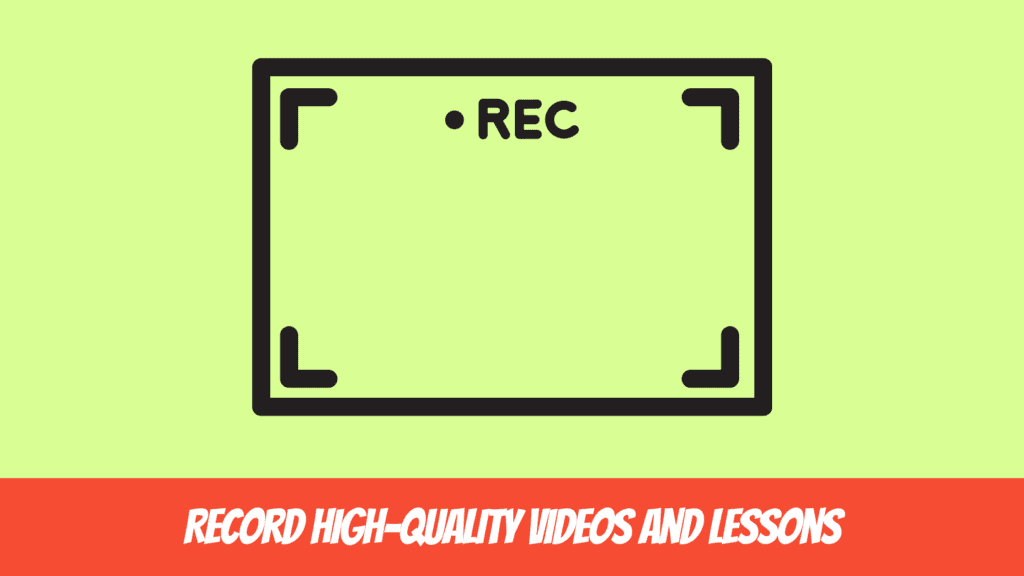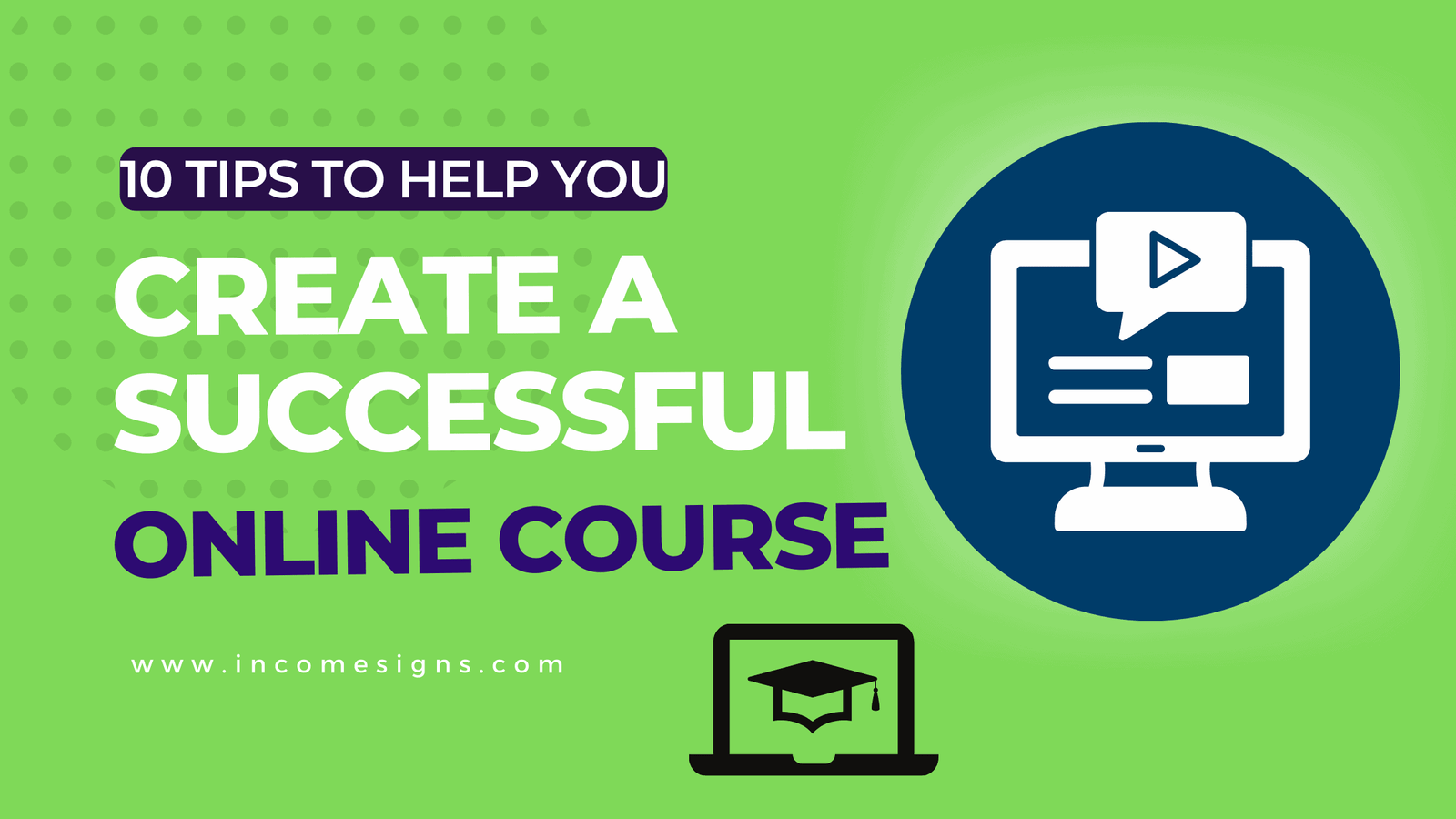Creating an online course can be a great way to build an additional stream of income.
Not to mention, it’s a great way to share your knowledge with others who may be looking to learn what you have to offer.
But before you start creating your course, there are a few things you should keep in mind to make sure you set yourself up for success.
Here are 10 tips to help you create a successful online course:
1. Identify your target audience.

Any successful online course must have a target audience in mind.
It’s not enough to simply create a course – you need to know who you’re creating it for.
What are their needs? What are their goals? What kind of learning style do they prefer?
By taking the time to answer these questions, you’ll be able to create a course that is tailored to your audience, and that will have a much better chance of resonating with them.
You will be able to better market your course if you know who your target audience is.
So before you start creating your next online course, take some time to think about who you want it to reach.
2. Create a course outline and curriculum.
A successful online course is not created overnight.
It takes careful planning and execution to develop a course that meets the needs of your students.
The first step is to create a course outline and curriculum.
This will give you a roadmap to follow as you develop your course material.
Not only will this make the process easier, but it will also help you to stay on track and focused on your goals.
Choose a topic you’re passionate about and have a strong understanding of to produce the best results.
If you are able to engage your students and provide them with valuable information, you will be well on your way to creating a successful online course.
3. Choose the right platform to host your course.
When choosing a platform for your course, it’s important to consider your goals and objectives.
Each platform has its own set of features and benefits, so it’s important to choose the one that is best suited for your needs.
For example, Udemy is a great option if you’re looking to create a course that is self-paced and self-contained.
Udemy courses are typically video-based, which allows students to learn at their own pace.
Skillshare, on the other hand, is better suited for courses that are more project-based and interactive.
Skillshare courses are often broken down into small projects that allow students to apply the concepts they learn in class.
No matter which platform you choose, make sure it aligns with your goals for the course. If you’re not sure which platform is right for you, consult with a course creation expert.
They can help you choose the platform that will best help you achieve your goals.
4. Record high-quality videos and lessons.

If you’re using videos as part of your online course, it’s important to make sure they are high quality.
This means investing in good equipment and taking the time to edit and produce your videos.
The last thing you want is for your students to be turned off by low-quality videos.
Remember, they are paying for your course, so you want to give them the best possible experience.
To produce high-quality videos, invest in a good microphone and camera.
There are many affordable options available that will still allow you to produce great-looking and sounding video content.
5. Make your content engaging and interactive.
Your course content should be engaging and interactive.
This means using different media types, such as videos, infographics, and images, to break up the text and keep your students engaged.
It also means incorporating quizzes, polls, and other activities into your lessons to make them more interactive.
If your content is boring and dry, your students are likely to lose interest and stop taking the course.
Make sure you’re using a variety of media types to keep your content fresh and engaging.
6. Set up a payment system.
Once you’ve created your course, you’ll need to set up a payment system.
This will allow you to accept payments from your students and give them access to your course content.
There are many different payment processors you can use, such as PayPal or Stripe.
Choose the one that is best suited to your needs and set up an account.
Once you have an account set up, you can then add a payment button to your course website.
Make sure the button is prominently displayed so that your students can easily find it and make a purchase.
7. Offer additional resources and bonus content.

In addition to your course content, you can also offer your students additional resources and bonus content.
This could include downloadable PDFs, cheat sheets, and other valuable resources.
Bonus content is a great way to provide value to your students and keep them engaged.
It also gives you an opportunity to upsell your other courses or products.
If you have any other courses or products that would complement your current course, be sure to mention them in your bonus content.
8. Promote your course online and offline.
Once your course is live, it’s time to start promoting it.
This can be done online through social media, email marketing, and other channels.
It can also be done offline through word of mouth and print marketing materials.
The key is to reach as many potential students as possible and get the word out about your course.
There are many different ways to promote your course.
Experiment with different strategies and see what works best for you.
9. Measure your success metrics
and adjust accordingly.
Once your course is up and running, it’s important to measure your success metrics and adjust accordingly.
This will help you determine what’s working and what’s not.
Some things you may want to track include:
– Number of students enrolled
– A course completion rate
– Student satisfaction levels
– Sales revenue
– Net Promoter Score
These are just a few of the things you can track.
Choose the metrics that are most important to you and track them on a regular basis.
Then, use the data you collect to make changes to your course and improve the overall experience for your students.
10. Constantly update and improve your course.

Last but not least, don’t forget to constantly update and improve your course.
As you get more feedback from your students, you’ll be able to identify areas that need improvement.
Make sure you’re regularly updating your course content and making changes based on student feedback.
This will help you keep your course relevant and up-to-date. It will also ensure that your students are getting the best possible experience.
Conclusion
Creating and marketing an online course can be a great way to earn passive income and build your brand.
By following the tips in this article, you’ll be well on your way to creating a successful online course.
Remember, the key is to start planning and promoting your course as early as possible.
The more time you have to promote your course, the better.
Good luck!
